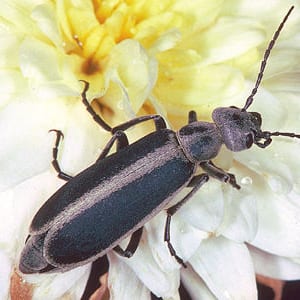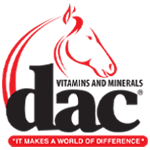We recently reported that Kara Oldford’s horse, Im Shy But Deluxe, had to be euthanized due to blister beetle induced laminitis. In light of this tragedy, GoHorseShow.com wanted to learn more about this problem and educate our readers on how to avoid this happening to your horses.
We conducted some research and talked to hay sellers Mark DeFreece of Whitesboro, Texas and Wes Wetherell of Purcell, Oklahoma. We asked DeFreece and Wetherell the secret to not buying hay infested with lethal blister beetles.
Wetherell admits that he worries about blister beetles “all the time” and that he tries to stay away from buying hay from areas that are known to have them–such as his home state of Oklahoma and Kansas. “I don’t buy hay from Oklahoma unless it is from the first or last cutting, and I always buy irrigated hay–not hay from dry land,” Wetherell says. “I also develop a strong relationship with the farmers, and I am very familiar and trust their product.”
DeFreece adds,”Blister beetles can be found in alfalfa at any time. It happens all the time, and it is just a fact of life, but I try to avoid buying any hay from Kansas and Oklahoma and buy all my hay out west.”
In an article titled, Blister Beetles in Alfalfa, by L.H Townsend, Extension Entomologist at the University of Kentucky College of Agriculture, it states that, Blister Beetles are extremely toxic to horses. Cantharidin is the poisonous substance in blister beetles. It is comparable to cyanide and strychnine in toxicity. Although horses are considered to be very susceptible, comparable doses can poison cattle or sheep. Very small amounts of cantharidin can cause colic in horses. The substance is very stable and remains toxic in dead beetles. Animals may be poisoned by ingesting beetles in cured hay. There is no sampling method that can detect toxic levels of blister beetles in cured hay.
 The article also provides these tips to horse owners
The article also provides these tips to horse owners
Horseowners can reduce the risk of feeding blister beetles to their horses by implementing the following precautions:
1) If possible grow your own alfalfa so that you can control all management practices and be sure the crop is beetle free.
2) If you do not produce you own hay or need more, buy from a local source and work with that producer to insure that you know what kind of management the hay has had. Develop a good working relationship with your hay producer.
3) Set aside or buy hay from the first cutting since it is much less likely to have beetles in it. In Kentucky, remember, we see these beetles in the third and fourth cuttings. There is no efficient way to inspect hay carefully enough to be sure that it is beetle free or to determine that beetles are below damaging levels before it is fed.







